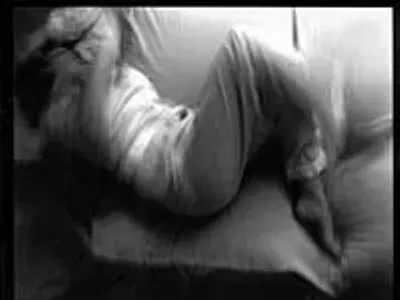Italian director Pier Paolo Pasolini (1922-75) was renowned as a controversial poet, novelist and essayist before he even considered picking up a movie camera. His unique sensibility was shaped by the mystical Christianity practiced by peasants in the region of Friuli, where he spent his youth, as well as Marxism, particularly the variant espoused by Antonio Gramsci, founder of the Italian Communist Party. And then there’s the well-known fact of his homosexuality, which he sometimes experienced as some strange kind of excess grafted onto his being.
Pasolini’s first films, Accatone! (1961) and Mamma Roma (1962), take place among the thieves, pimps and prostitutes of the borgata, the impoverished district on the outskirts of Rome. Next followed Il Vangelo Secondo Matteo (1964), a documentary-style treatment of the Gospel of St. Matthew with a decidedly Marxist bent, and Uccellacci e Uccellini (Hawks and Sparrows, 1967), a picaresque fable starring the clownish Italian actor Toto and a large black crow given to compulsively spouting leftist political jargon. The late ’60s saw his interpretations of the classic Greek dramas Oedipus Rex and Medea, as well as critiques of contemporary families and society in Teorema (1968) and Il Porcile (1969).
The perpetual outsider, Pasolini became increasingly disenchanted with society, especially the values fostered by consumer capitalism, and wrote, “I believe that the past is the only force able to contest the present …” Thus in the early ’70s, he returned to the precapitalist era of the Middle Ages with his extraordinary Trilogia della Vita (Trilogy of Life), a series of three films based on Boccaccio’s Decameron, Chaucer’s The Canterbury Tales and The Arabian Nights.
Il Decameron (1970) takes its visual cues (especially the costuming) from the paintings of Brueghel and Giotto, and consists of nine bawdy tales about love, sin, sex and deception, including one account which weaves its way throughout the second half of the film and features Pasolini himself as a painter who has come to Naples to create a fresco.
The film begins with the story of Andreuccio, a preening youth who’s a little too obvious with his wealth. He is rooked by a young woman claiming to be his long-lost sister and falls into a rigged outhouse. Literally swimming in shit, Andreuccio cries out for help, but is suddenly persona non grata. He next encounters a couple of scoundrels who convince him to climb into the tomb of a recently deceased bishop in order to rob the corpse of his vestments. Predictably, Andreuccio gets sealed in, but another group of thieves soon shows up, ignorant of the surprise that awaits them.
Boccaccio, and Pasolini, were not averse to making fun of the church, as in the tale of a virile young man who feigns muteness in order to be retained as a gardener in a convent and soon finds himself servicing all the nuns — or the tale of a priest who claims he can turn a woman into a mare and, much to his delight, is put to the test.
If Il Decameron is suffused with the grace and charm of the Mediterranean, I Racconti di Canterbury (1971), filmed in rural England, is a much darker, pessimistic film, and features the public burning of a homosexual on “the griddle,” someone’s ass getting reamed with a red-hot poker, thieves dying in their own vomit and shit, and Pasolini’s astonishing re-creation of hell based on the paintings of Hieronymus Bosch, replete with copulating demons and a devil who farts friars out of his ass.
Yet I Racconti di Canterbury is not all darkness, for there’s also a lighthearted homage to Chaplin, the trickster-tramp played by Pasolini’s curly-haired friend, Ninetto Davoli, whose presence in a Pasolini film always indicates innocence and joy.
After the travails of Canterbury, Il Fiore delle mille e una notte (Arabian Nights, 1974) is like a deep draught of honey wine, for the trilogy concludes on a note of sensual ecstasy in what is surely Pasolini’s most beautiful film. Filmed in Eritrea, Yemen, Iran and Nepal, Pasolini’s palette dazzles, his camera lingering on golden baskets and textiles, yellow-ochre desert sands, the bright white robes and whitewashed mosques of the villagers, bronzed glistening skin and indigo night skies.
The film begins with the auctioning of the beautiful slave Zumurrud. With great wit and intelligence she insults all the bidders, finally choosing the penniless boy Nur ed Din as her master. After initiating him sexually and kindling their great love, she is separated from him and adopts male garb in order to travel safely through the desert. Mistaken for a man, she is made king of a desert city, and the rest of the story concerns Nur ed Din’s search to be reunited with his love.
The trilogy was phenomenally successful commercially, less for any aesthetic reasons than for the abundance of nudity on the screen. (Pasolini’s celebration of the male body remains unique.) After completing the films, Pasolini publicly repudiated them, saying he had only contributed to the commodification of the body, and concluded that “artists must create works so extreme they become unacceptable to even the broadest minds.” He achieved such a work with his final film, Salo o le 120 giornate di Sodoma (Salo or the 120 Days of Sodom, 1975), a formally exquisite allegory of total degradation based on the work of the Marquis de Sade.
In 1975, Pasolini was brutally killed, the exact circumstances of his murder never satisfactorily explained.
Deborah Hochberg writes about film for the Metro Times. E-mail her at [email protected]





